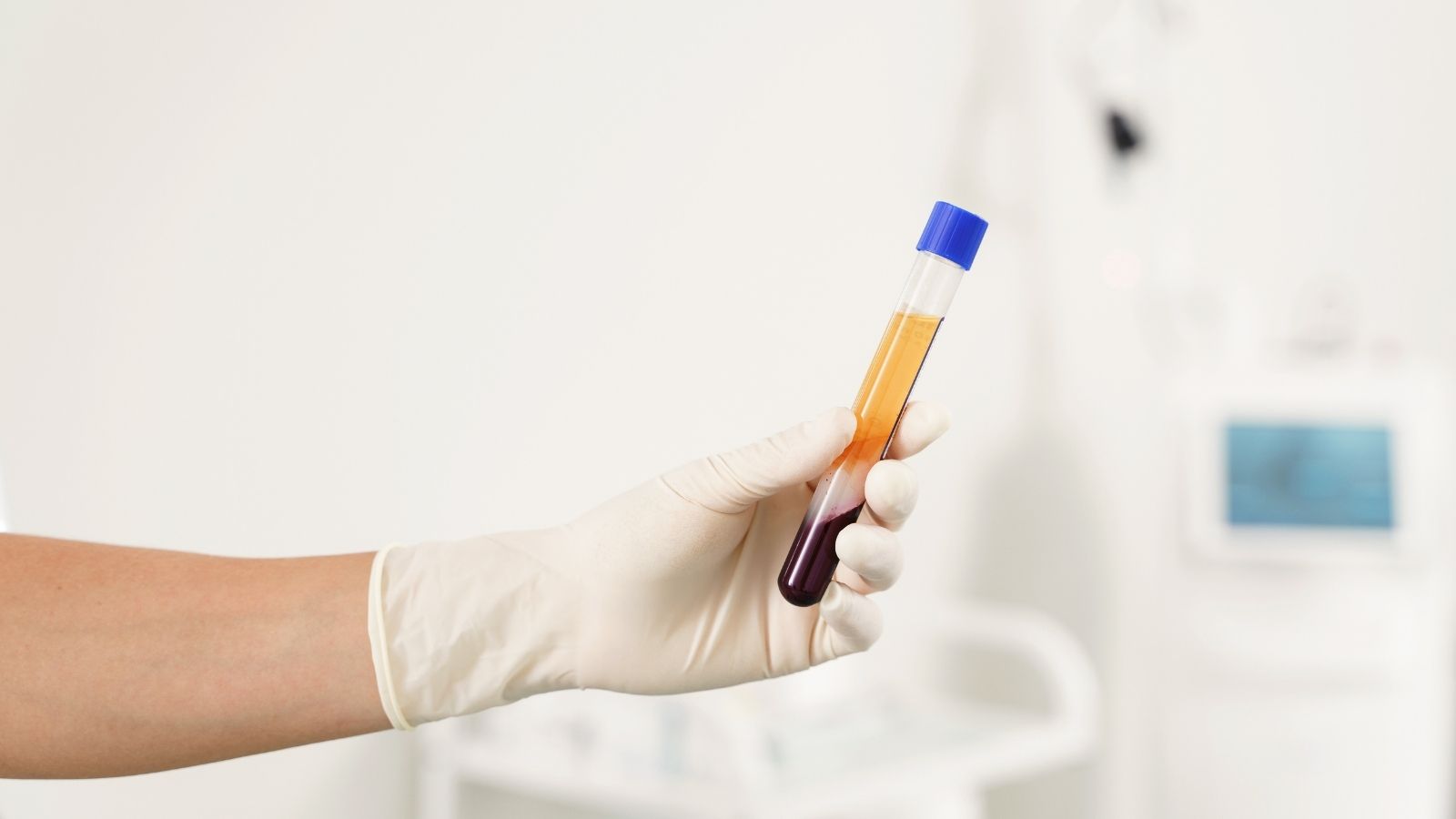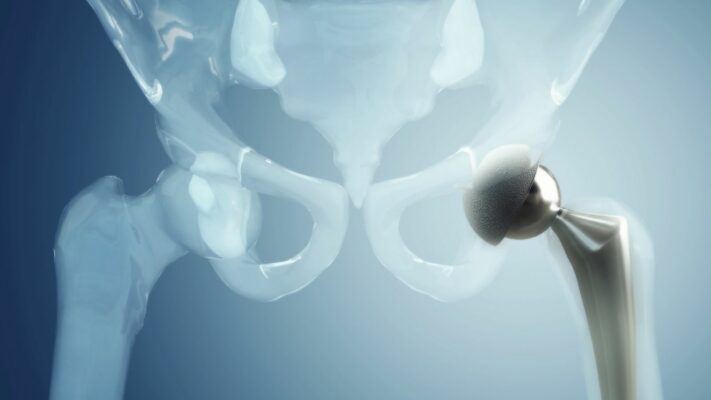Prof. Dr. Murat Demirel, one of the best orthopedic doctors performing PRP treatment in Ankara, stands out with modern treatment methods for musculoskeletal disorders and sports injuries. PRP (Platelet Rich Plasma) therapy is a safe and effective method where platelet-rich plasma obtained from the patient’s own blood is injected into the damaged tissue to support natural healing. Prof. Dr. Demirel provides a personalized treatment plan for each patient by serving in technologically advanced and high-standard hygienic clinics among hospitals offering PRP treatment in Ankara.
PRP treatment can provide successful results in many orthopedic conditions such as joint pain, tendon injuries, cartilage damage, and sports traumas. During the treatment process, Prof. Dr. Demirel informs his patients in detail, accelerates the recovery process with medical recommendations after PRP treatment, and ensures the best results are achieved. In addition, by providing transparent and up-to-date information about PRP treatment prices in Ankara, he helps patients make informed decisions. To step into a healthier and more active life, you can also contact us immediately and book an appointment.
| Treatment Name | PRP Treatment (Platelet Rich Plasma) |
| Application Area | Knee and shoulder joints (tendon, ligament, muscle, cartilage tissues) |
| Purposes of Use | Knee: Osteoarthritis, meniscus tear, cartilage damage
Shoulder: Rotator cuff tendinopathy, calcific tendinitis, impingement syndrome |
| Application Method | Injection of platelet-rich plasma obtained by centrifuging the patient’s blood into the joint or damaged tissue |
| Type of Anesthesia | Local anesthetic cream or ice application before injection |
| Mechanism of Action | Growth factors in PRP stimulate tissue repair, reduce inflammation, and accelerate the healing process |
| Suitable Patient Profile | Patients with early to moderate stage joint disease seeking alternative or supportive treatment to surgery |
| Complications | Pain and swelling at the injection site; allergic reaction risk is very low as the patient’s own blood is used |
| Recovery Process | Symptom relief may begin within 1–2 weeks; long-term effectiveness may last up to 3–6 months |
| Number of Sessions | Usually 1–3 sessions are recommended; applied every 2–4 weeks |
| Alternative Methods | Stem cell therapy, hyaluronic acid injection, physical therapy |
| Follow-up Process | Clinical response is monitored, repeat applications may be planned if necessary |


Prof. Dr. Murat Demirel
Orthopedics and Traumatology Specialist
Orthopedics Specialist Prof. Dr. Murat Demirel was born in Ankara in 1974. He completed his primary education at Ankara Kavaklıdere Primary School and his secondary and high school education at Ankara Atatürk Anatolian High School. Dr. Demirel graduated from Ankara University Faculty of Medicine in 1998 and completed his residency in Orthopedics and Traumatology at Ankara Numune Training and Research Hospital, 1st Orthopedics and Traumatology Clinic, in 2004.
PhD
Ankara University Institute of Health Sciences
Specialization
Ankara Numune Training and Research Hospital, 1st Orthopedics Clinic
Medical School
Ankara University Faculty of Medicine
Yazı İçeriği
What is Platelet Rich Plasma and What Does It Do in Our Blood?
Platelet Rich Plasma, as the name suggests, means “plasma rich in platelet (thrombocyte) cells.” This is a special serum prepared from the patient’s own blood that contains a much higher concentration of platelets compared to normal blood. But why are these platelets so important? To understand this, we need to briefly look at the incredible team within our blood. Our blood mainly consists of the following components:
- Plasma
- Red blood cells (erythrocytes)
- White blood cells (leukocytes)
- Platelets (thrombocytes)
Red blood cells carry oxygen, white blood cells fight infections. The most well-known task of platelets is to ensure clotting to stop bleeding during an injury. But their true magical power is different. Platelets are tiny sacs that store hundreds of reparative proteins called “growth factors.” When damage occurs in the body, they are the first emergency team to arrive at the site. Upon contact with damaged tissue, they become activated and release these growth factors into the environment, triggering a major repair process. PRP treatment is the art of taking this reparative power, concentrating it, and delivering it directly to the problematic area.
How is Platelet Rich Plasma Prepared, the Body’s Own Healing Power?
The preparation process of PRP is a sensitive procedure where technology and biology come together. Every step is carefully performed to ensure maximum efficiency and safety.
The first step is to draw a little more blood than what is required for a standard blood test from a vein in the patient’s arm. A special substance (anticoagulant) is placed inside the tubes used during this process to prevent immediate clotting. This ensures that the platelets do not activate prematurely and lose their valuable contents.
Next, these tubes are placed in a special device called a “centrifuge.” The centrifuge spins the tubes at very high speeds to create centrifugal force. This force separates the blood components into layers based on their density. Just like how oil and vinegar separate in a salad dressing, blood cells separate as well. The heaviest red blood cells sink to the bottom of the tube, while plasma and the platelets we value most remain at the top.
This process is usually repeated twice. After the first centrifugation removes red blood cells, the plasma and platelet mixture is spun again at a higher speed. This second process ensures that the platelets become highly concentrated and gather in a small volume at the bottom of the tube. Finally, the platelet-poor plasma at the top is discarded, leaving behind PRP, a golden-colored concentrated healing serum 5 to 10 times richer than normal blood. This serum is then made ready for injection.
How Does Platelet Rich Plasma Trigger a Repair Process in the Body?
When PRP is injected into a damaged joint, tendon, or muscle, it triggers a chain of events that mimics and enhances the body’s natural healing mechanism. PRP is not a direct “building material”; instead, it acts more like a “foreman” who comes to a construction site and tells all the workers what to do. It organizes and directs the body’s own repair cells.
This process proceeds mainly through the following steps:
Activation and Growth Factor Release: Injected platelets come into contact with collagen in the damaged tissue, become activated, and rapidly release hundreds of growth factors.
Inflammation: PRP first initiates a controlled and short-term inflammatory response in the area. This is not something to be feared; on the contrary, it is the first and most necessary step of healing. The body receives the signal “There’s a problem here!” and sends its repair teams to the region.
Cell Migration (Chemotaxis): The released growth factors act like a “call signal,” attracting stem cells and other reparative cells from different parts of the body to the damaged site.
Cell Proliferation: These repair cells that reach the area begin to multiply rapidly under the influence of growth factors and work to produce new, healthy tissue.
New Blood Vessel Formation (Angiogenesis): For healing to progress properly, the area must have good blood supply. Growth factors stimulate the formation of new blood vessels, ensuring more oxygen and nutrients are delivered to the tissue.
New Tissue Synthesis: In the final stage, cells produce building blocks such as collagen to repair the damaged tissue and support its reconstruction.
Contact us for detailed information and an appointment!
For Which Orthopedic Conditions Can Platelet Rich Plasma Therapy Be Considered?
PRP is a valuable treatment option especially in musculoskeletal problems that have low self-healing potential or have become chronic. Some of the conditions we frequently address in orthopedics are:
- Joint Osteoarthritis
- Chronic Tendon Problems (Tendinopathies)
- Ligament Injuries
- Muscle Tears
- Cartilage Damage
- Supporting Post-Surgical Recovery
Why is Platelet Rich Plasma So Popular in Knee Osteoarthritis?
Knee osteoarthritis is the wearing down of joint cartilage over time, making it unable to function properly. This leads to pain, stiffness, and restricted mobility. PRP has revolutionized the treatment of knee osteoarthritis. Unlike other treatments that only temporarily mask pain, it aims to create a biological environment for cartilage tissue repair. Growth factors in PRP may stimulate the proliferation of cartilage cells (chondrocytes), increase the production of new cartilage building blocks, and reduce inflammation within the joint to relieve pain. Especially in mild to moderate knee osteoarthritis, there are numerous scientific studies showing that patients experience significant pain reduction and serious improvement in daily activities such as walking and climbing stairs.
How Does Platelet Rich Plasma Provide a Solution for Persistent Tennis Elbow?
Tennis elbow (lateral epicondylitis) is the wear and tear and formation of small tears in the tendons on the outer side of the elbow due to overuse. It usually responds to rest, medication, and physical therapy. However, in some cases, the pain becomes chronic and significantly reduces the patient’s quality of life. This is where PRP comes into play for “persistent” cases. Tendons normally have poor blood supply, which makes their self-healing slow. When we inject PRP directly into the damaged tendon area, we send an intense “healing signal” to that region. It increases blood supply, triggers the formation of new and healthy tendon tissue, and helps repair chronic damage. It is a very effective method to try before surgery in patients who do not respond to other treatments.
What Factors Influence the Success of Platelet Rich Plasma Therapy?
It is important to know that PRP treatment is not a “magic wand” and its success depends on many factors. Every patient may respond differently to the treatment. The main factors affecting results are:
- The patient’s age and overall health condition
- Type, degree, and chronicity of the damage
- Quality of the PRP applied (platelet concentration, white blood cell content)
- Proper injection technique and use of ultrasound guidance
- Patient compliance with post-treatment medical advice (rest, rehabilitation)
- Habits that negatively affect healing, such as smoking
Why is Platelet Rich Plasma Injection Different from Other Treatments?
Patients often compare PRP with other injection therapies such as cortisone or hyaluronic acid (commonly known as the “rooster comb injection”). It is important to understand the philosophical differences between them.
Cortisone injection is a powerful anti-inflammatory drug. It rapidly suppresses joint inflammation and relieves pain. This is like extinguishing a fire with water. It provides fast relief, but its effect wears off within a few weeks or months and it does not solve the underlying problem. Moreover, repeated use may damage tissue.
Hyaluronic acid injection aims to increase the lubrication and shock-absorbing properties of joint fluid. This can be compared to lubricating a machine. It facilitates joint movements and reduces pain temporarily (usually up to 6 months), but it has no reparative effect.
Platelet Rich Plasma, however, works with a completely different approach. Instead of extinguishing a fire or lubricating a machine, it sends a construction crew to repair the foundations of a damaged building. Its effects appear more slowly because biological repair takes time. However, since it targets the underlying problem, the improvement it provides can be much more permanent and meaningful.
What is a Platelet Rich Plasma Treatment Day Like for a Patient?
The treatment process is usually quite comfortable and simple for patients. The entire procedure, including preparation and application, takes about one hour. Here is what awaits you on the treatment day:
Consultation and Preparation: When you arrive at the clinic, your physician will review the process with you one last time and answer any questions you may have.
Blood Collection: A small amount of blood is drawn from your arm. This procedure is no different from a standard blood test.
Preparation of PRP: While you rest, your blood is processed in the laboratory through centrifugation to prepare your PRP. This takes about 20–30 minutes.
Application: The prepared PRP is injected into the targeted area. This is the most important stage. To ensure that the injection reaches the damaged tissue, it must be performed under ultrasound guidance. Ultrasound allows us to visualize tendons, ligaments, and joint spaces beneath the skin and confirm in real time that the needle reaches the correct target. To minimize pain during the procedure, a local anesthetic spray may be applied or very fine needles may be used.
What Can I Do to Increase the Success of My Platelet Rich Plasma Therapy?
PRP therapy is a process in which the physician and the patient work together as a team. After the injection, there are important things you can do to contribute to the success of the treatment.
Rest: Depending on the treated area, your physician will recommend a specific rest period. Generally, it is important to avoid excessive strain on the area during the first few days.
Pay Attention to Medication: For the first 1–2 weeks after treatment, you will be advised to avoid anti-inflammatory medications (such as ibuprofen, naproxen) so as not to suppress the natural inflammation process initiated by PRP. Simple painkillers containing paracetamol are usually recommended for pain.
Physical Therapy and Exercise: As the healing process progresses, strictly following the exercise program recommended by your physician or physiotherapist is vital for tissue strengthening and regaining function.
Healthy Nutrition: A diet rich in protein, vitamins, and minerals supports healing during the repair process. Drinking plenty of water is also important.
Be Patient: Remember this is a biological process. The effects of healing will appear gradually over weeks. Give yourself and your body time.
What are the Advantages of Platelet Rich Plasma Therapy?
There are many logical reasons behind the increasing popularity of PRP therapy. Its main advantages include:
- Being completely natural
- Obtained from the patient’s own blood
- No risk of allergy
- No risk of disease transmission
- A minimally invasive procedure
- No need for general anesthesia
- Shorter recovery time compared to surgery
- Targets the root cause rather than symptoms
- Potential to delay or eliminate the need for surgery
Are There Any Risks or Side Effects of Platelet Rich Plasma Therapy?
As with any medical intervention, PRP also has potential side effects and risks. However, one of the best aspects of this treatment is that since your own blood is used, its safety profile is extremely high. PRP side effects are generally mild, temporary, and easily manageable.
The most common side effects:
- Pain at the injection site
- Tenderness
- Swelling
- Bruising
These symptoms usually disappear on their own within a few days and are considered a natural part of the healing process. Applying ice can help relieve these complaints.
Rare risks are the same as those common to any injection procedure:
- Infection
- Bleeding
- Nerve or vessel injury
These risks are minimized when the procedure is performed under sterile conditions, by an experienced physician, and under ultrasound guidance.
Who is Not a Suitable Candidate for Platelet Rich Plasma Therapy?
The question of who should not receive PRP is critical for the safety and effectiveness of the treatment. PRP is not a treatment that can be applied to everyone. Some conditions may prevent the procedure.
Situations unsuitable for PRP include:
- Bleeding or clotting disorders
- Critically low platelet count
- Active cancer disease
- Infection in the treatment area or widespread infection in the body
- Severe liver disease
- Hemodynamic instability (circulatory system problems)
- Pregnancy and breastfeeding periods
In addition, patients taking blood-thinning medication should be specially evaluated by the physician depending on the possibility of temporarily discontinuing the drug.
How Much Does Platelet Rich Plasma Therapy Cost and Is It Covered by Insurance?
PRP prices and PRP cost are naturally among the most frequently asked questions by patients. However, there is no single, clear answer to this question. The PRP treatment cost for 2025 also depends on many variables.
Factors affecting the cost:
- The brand and quality of the PRP preparation kit used
- Whether a single session or multiple sessions are required
- The number and size of the areas where the application will be performed
- The technological equipment and location of the clinic where the procedure is performed
If you are wondering why PRP prices vary so much, remember that this is a personalized biological treatment and not a standard drug. Unfortunately, PRP therapy is not yet routinely covered by the SGK (Social Security Institution) or most private health insurance providers. Therefore, it is important to discuss costs openly with your physician before deciding on treatment and to learn all the details to avoid surprises.
Contact us for detailed information and an appointment!
Frequently Asked Questions
Can PRP be applied for a shoulder tear?
Yes, PRP (Platelet Rich Plasma) is an effective method for tendon tears in the shoulder. It is especially preferred in partial (incomplete) tears and in cases that do not require surgery. By injecting this plasma prepared from your own blood into the tear site, we stimulate the body’s natural healing mechanisms. This accelerates tissue repair, reduces pain, and restores shoulder function. It can also be used to support healing after surgery.
Does PRP knee treatment work?
Absolutely, yes. PRP therapy provides highly satisfactory results in knee osteoarthritis, meniscus injuries, and ligament problems. It supports the repair of damaged cartilage and tissues in the knee, significantly reducing pain and improving mobility. We observe that our patients return to their daily activities much more comfortably. Since this method utilizes the body’s own self-healing power, it is very safe.
How many times is PRP applied to the knee?
The number of PRP sessions applied to the knee is planned individually depending on the patient’s condition and the degree of knee damage. Generally, 2 or 3 sessions at intervals of 2 to 4 weeks are sufficient. In some cases, even a single injection may provide noticeable relief. Together, we determine the most appropriate number of sessions by evaluating the treatment response and considering your expectations.
What should be considered after a PRP injection?
It is important to rest the injection area for the first 24–48 hours after a PRP injection. During this period, you should avoid activities and strenuous sports that put excessive strain on the knee or shoulder. Applying ice to the injection site may help reduce swelling and pain. In addition, you should not take painkillers (especially anti-inflammatory drugs) without your doctor’s approval, as these medications may affect the mechanism of PRP. You can usually return to daily activities within a short time.




